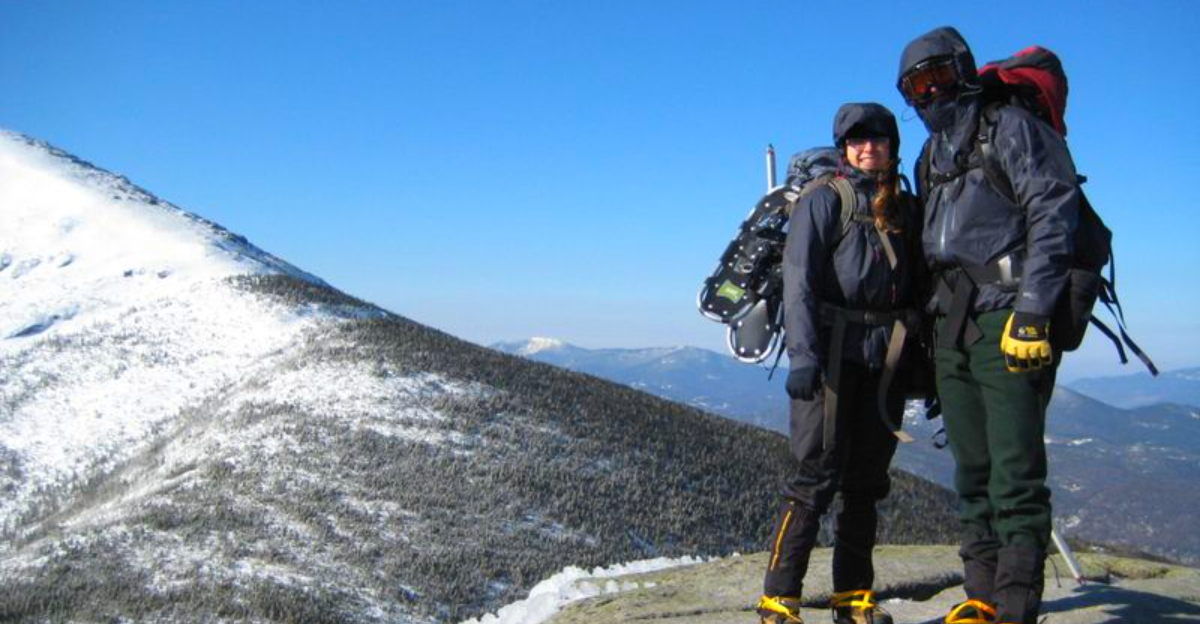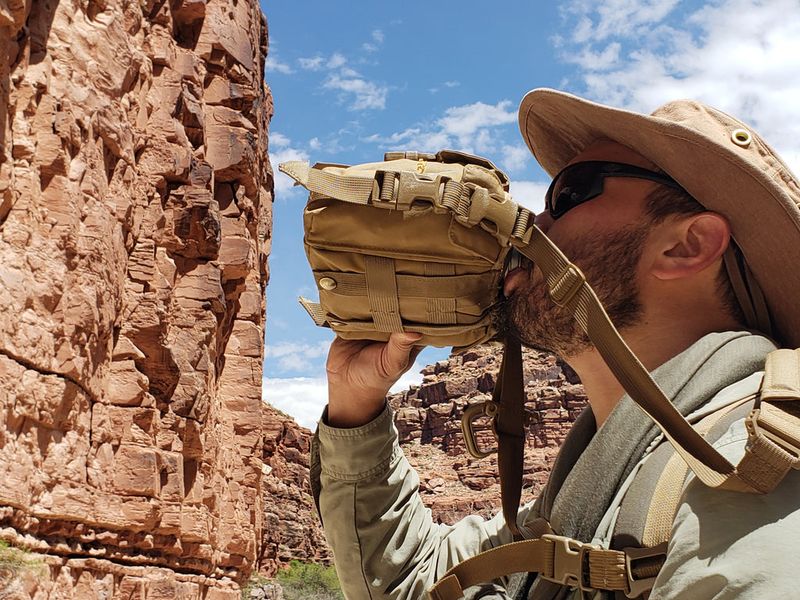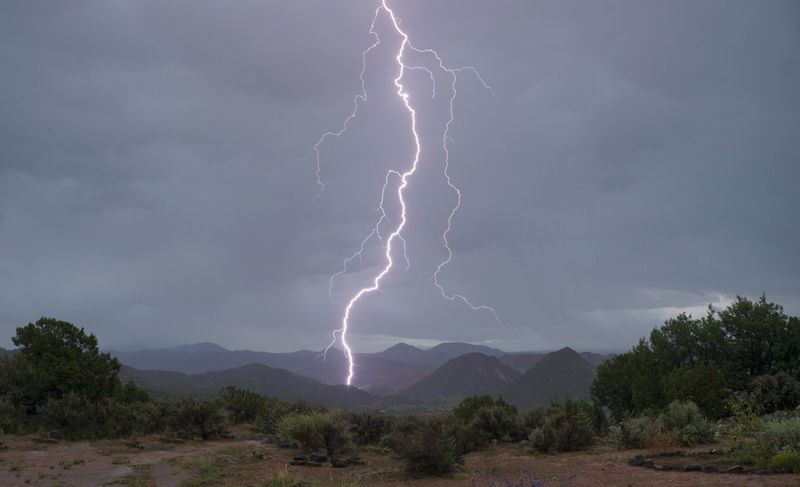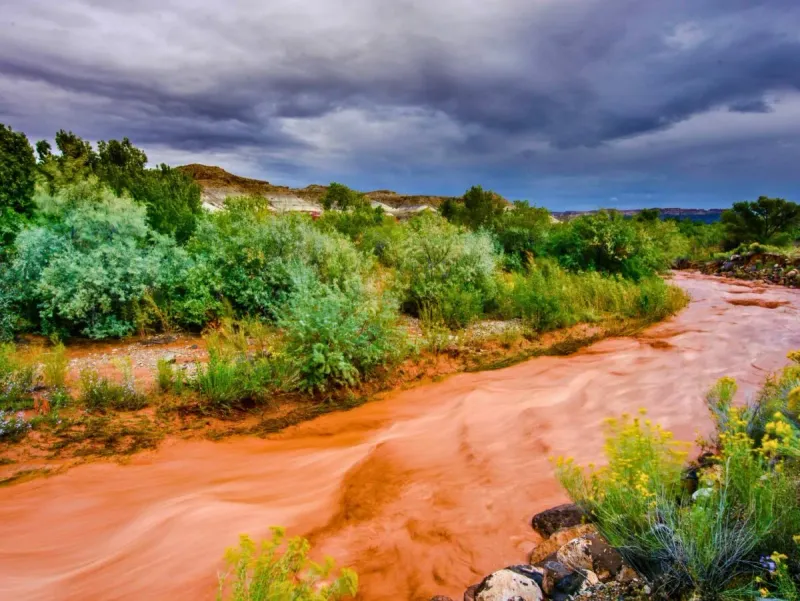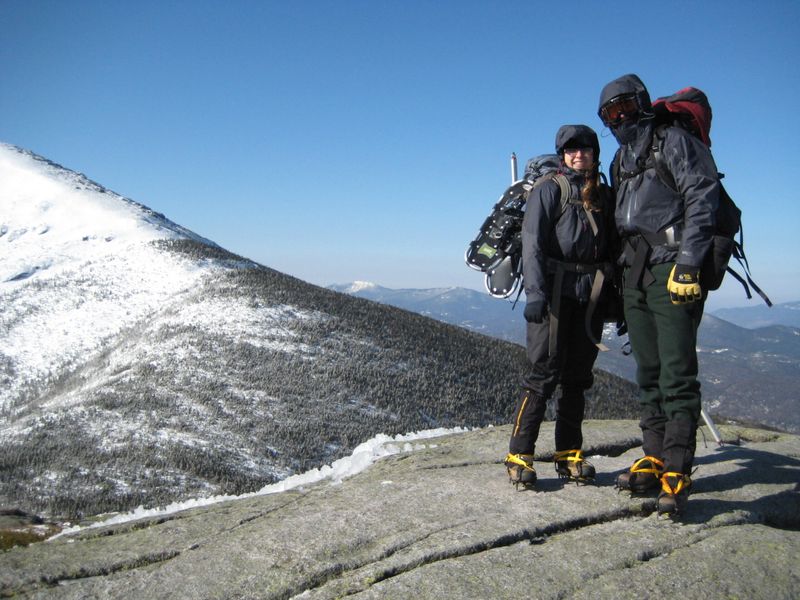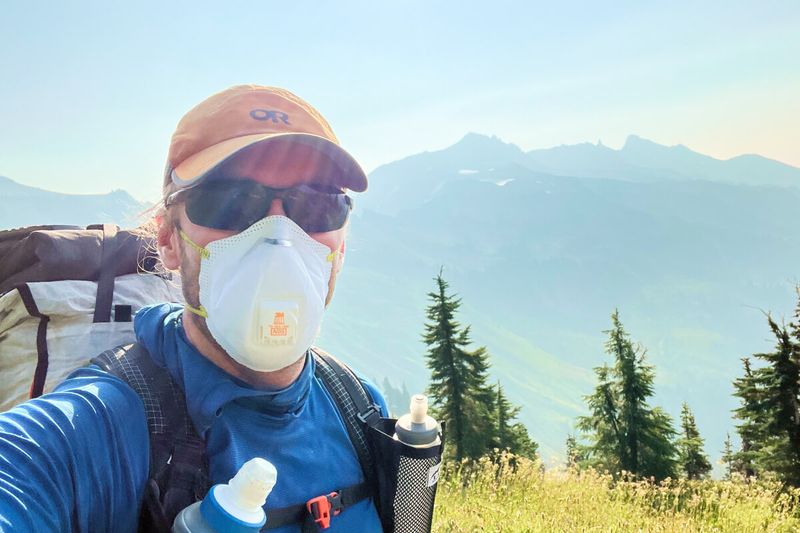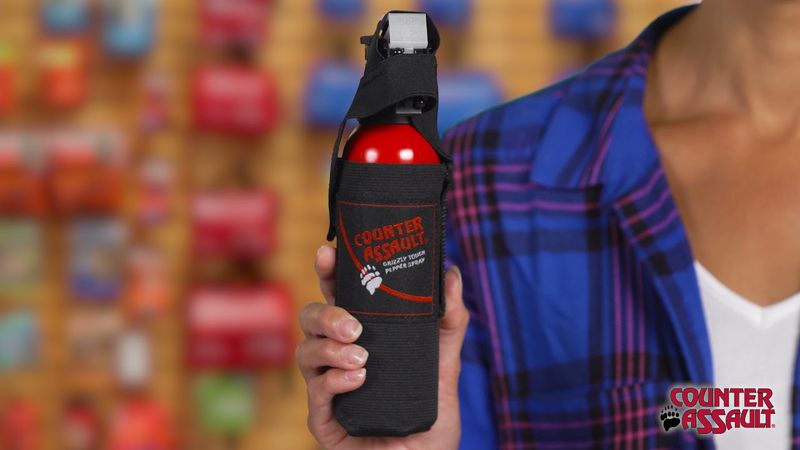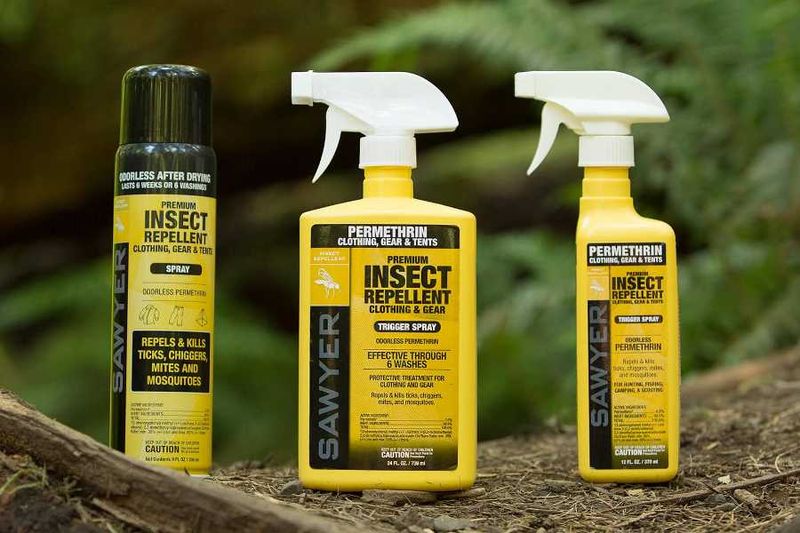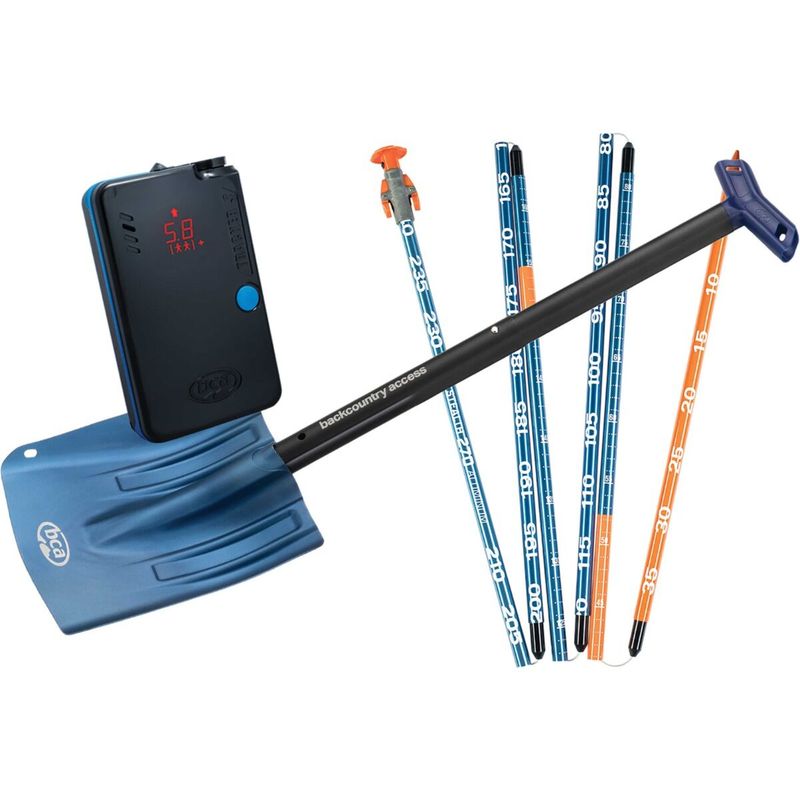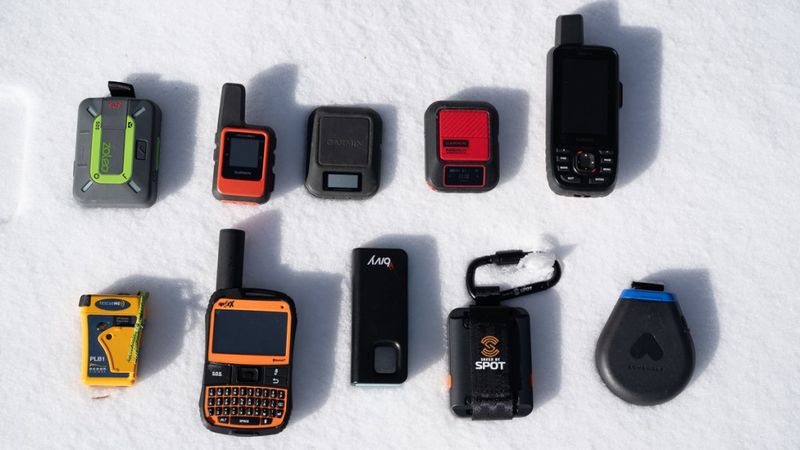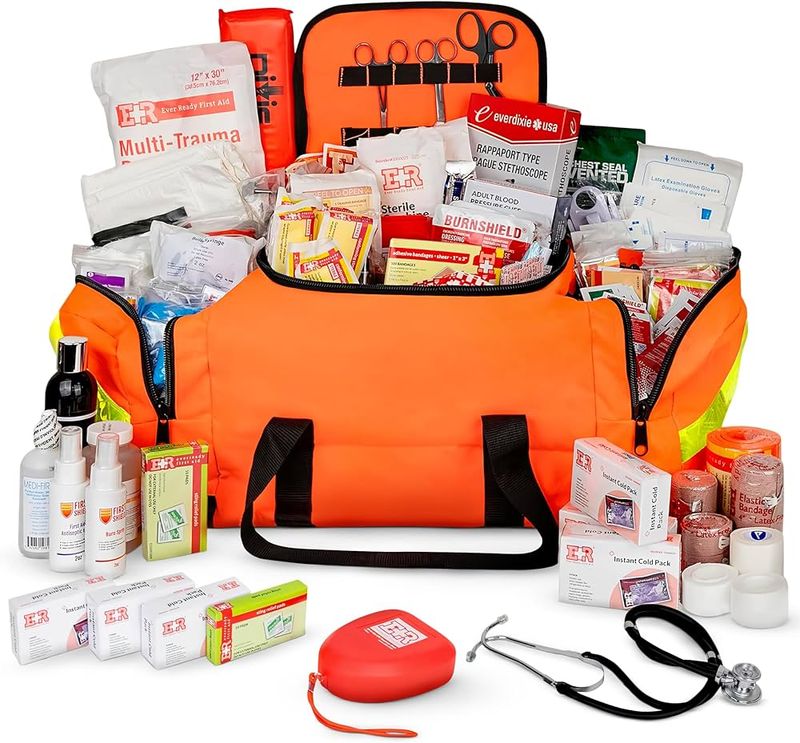Hiking through America’s wild places is thrilling, but nature doesn’t always play nice. From scorching deserts to icy peaks, from lightning-prone ridges to bear country, every trail brings unique dangers. Smart hikers know that the right emergency kit can mean the difference between a scary story and a true disaster.
1. Desert Heat & Dehydration Kit (Southwest deserts, low-elevation canyons)
When temperatures soar past 100 degrees in Arizona’s canyons or Nevada’s valleys, your body becomes a ticking clock. Heat exhaustion can sneak up fast, turning a fun day hike into a medical emergency before you realize what’s happening. Dehydration steals your ability to think clearly, making bad decisions even worse.
Pack at least two to four liters of water per person, plus electrolyte mixes to replace lost salts. A wide-brim hat and UPF clothing shield your skin, while a cooling bandana around your neck works wonders. Instant ice packs and a reflective emergency bivy can literally save your life if someone starts showing confusion or stops sweating.
Sip water constantly rather than gulping it all at once. Rest during the hottest hours and watch for warning signs like muscle cramps or dizziness—these mean it’s time to cool down immediately and consider calling for help.
2. Thunderstorm & Lightning Kit (summer mountains, Southeast afternoons)
Lightning doesn’t give second chances. Every summer, afternoon thunderstorms build over mountain ranges from the Appalachians to the Cascades, turning sunny mornings into deadly situations. You might be miles from shelter when the first rumble echoes across the valley.
A compact NOAA weather radio lets you monitor storm forecasts in real time, giving you precious warning minutes. Pack a waterproof shell and spare insulating layer to stay dry during your escape. Keep a plastic groundsheet and foam pad handy—if lightning strikes are imminent and you can’t descend, crouch on the insulated pad with your feet together, never lie flat.
The golden rule is simple: if you hear thunder, you’re already in danger. Get off ridges and away from isolated trees immediately. Head downhill to safer ground. Lightning is a leading weather killer for outdoor enthusiasts, so take every rumble seriously.
3. Flash-Flood & Slot-Canyon Kit (desert canyons, monsoon season)
Slot canyons are stunningly beautiful—and terrifyingly dangerous when monsoon rains hit miles upstream. Water can rise from ankle-deep to chest-high in minutes, carrying rocks and debris like battering rams. Hikers have been swept away in canyons that looked bone-dry an hour earlier.
Always carry a NOAA-band radio or reliable weather app to monitor upstream conditions. Pack a headlamp for navigating dark sections and dry bags to protect critical gear. A small throw-line and lightweight climbing-rated cord can help you establish handlines on slippery sections or assist others in trouble. Study your map beforehand and mark every potential escape route to higher ground.
If water turns muddy, rises noticeably, or you hear a roar upstream, climb immediately—even gaining a few feet of elevation can save your life. Never enter slot canyons when thunderstorms are forecast anywhere in the drainage area.
4. Alpine Cold, Wind & Hypothermia Kit (high Sierra, Rockies, Northeast peaks)
High elevations don’t care what month it is—hypothermia kills hikers every summer in the Rockies and Sierra Nevada. Wind cuts through cotton like it’s not even there, and a sudden rainstorm can soak you to the bone. Once you’re wet and cold at 12,000 feet, your body temperature drops fast.
Layer smartly with wool or synthetic fabrics that insulate even when damp, never cotton. Carry a waterproof shell, warm hat, gloves, and chemical hand warmers as backup heat sources. A reflective emergency bivy weighs almost nothing but can trap precious body warmth if conditions turn nasty. Pack extra high-calorie snacks because your body burns fuel like crazy trying to stay warm.
The key is adding layers before you feel cold, not after you’re already shivering. Watch for slurred speech, confusion, or uncontrollable shivering—these are red flags that someone needs immediate warming and medical attention.
5. Wildfire Smoke & Air-Quality Kit (West, fire season; East during smoke transport)
Wildfire smoke isn’t just unpleasant—it’s legitimately harmful, especially the tiny PM2.5 particles that burrow deep into your lungs. Western fire seasons now stretch from spring through fall, and smoke can drift thousands of miles, affecting trails from Montana to Maine. Breathing this stuff during strenuous hiking multiplies the damage.
Stock up on NIOSH-certified N95 or P100 respirators that actually filter fine particles when properly fitted. Include eye protection because smoke irritates more than just airways. Carry a printed AQI chart so you can interpret official air quality readings, and build flexibility into your plans to postpone hikes when conditions are hazardous.
Check AirNow or local AQI forecasts every morning during fire season. If the AQI climbs into unhealthy ranges, limit your time outdoors and reduce exertion. A well-fitted respirator helps, but avoiding exposure altogether is always the smartest move.
6. Bear-Country Deterrence Kit (Greater Yellowstone, Northern Rockies, parts of the Sierra & Cascades)
Bear encounters are statistically rare, but when a grizzly or black bear decides you’re a threat—or worse, a food source—you need an effective defense right now. Running doesn’t work; climbing trees rarely helps; and playing dead only applies in specific attack scenarios. Bear spray, however, has stopped countless charges without harming the animal.
Carry an EPA-approved bear spray canister of at least 300 grams in a front-accessible holster, not buried in your pack. Practice deploying it so you can aim a 1–2 second cloud at close range under stress. Store all food, toiletries, and scented items in odor-resistant containers or bear canisters to avoid attracting bears in the first place.
Make noise while hiking, especially near streams or dense brush. Keep your spray within arm’s reach at all times. National Park Service data shows bear spray is highly effective—but only if you carry and know how to use it.
7. Tick & Mosquito Disease-Prevention Kit (Mid-Atlantic, Northeast, Upper Midwest, Southeast)
Ticks might be tiny, but they pack a punch—Lyme disease, Rocky Mountain spotted fever, and other nasty illnesses all hitch rides on these eight-legged bloodsuckers. Mosquitoes aren’t just annoying; they spread West Nile virus and other diseases across the country. A few hours on a wooded trail can expose you to dozens of potential bites.
Treat your clothing and gear with 0.5% permethrin spray before your trip—it lasts through multiple washes and repels ticks and mosquitoes on contact. Apply EPA-registered repellent with 20–30% DEET or picaridin to exposed skin. Pack fine-tipped tweezers, a small mirror, and alcohol wipes for safe tick removal. Wear light-colored long layers so you can spot ticks easily.
Perform thorough full-body tick checks after every hike, paying special attention to warm, hidden areas. Remove attached ticks promptly and properly using tweezers, pulling straight out without twisting.
8. Avalanche Terrain Rescue Kit (winter backcountry)
Avalanches kill fast—burial victims have only about 15 minutes before survival rates plummet. Professional rescue teams almost never arrive in time. Your only real hope is your partners digging you out within minutes, which means every single person in your group must carry—and know how to use—the essential rescue gear.
Each person needs a modern three-antenna avalanche transceiver, a collapsible probe, and a sturdy metal-blade shovel. Airbag packs add another layer of protection by helping you stay near the surface. But gear is worthless without training—practice beacon searches, probing, and strategic shoveling until they become automatic. Take an avalanche safety course and refresh your skills every season.
Check avalanche forecasts from Avalanche.org or regional centers before every backcountry trip. Avoid suspect slopes when danger is elevated. Remember: avalanche rescue is a team skill, not individual heroics. Everyone carries, everyone trains, everyone comes home.
9. Navigation, Lost-Overnight & Signaling Kit (anywhere, any season)
Most backcountry rescues start with something embarrassingly simple: someone took a wrong turn, followed a game trail, or missed a junction in fading light. Suddenly that three-hour hike becomes an unplanned night in the woods. Navigation mistakes happen to experienced hikers too, but having the right tools and a solid plan makes all the difference.
Carry a paper map and compass as your foundation, plus a GPS device or smartphone with a power bank for backup. Pack a personal locator beacon or satellite messenger that works when cell service doesn’t. Include a whistle, signal mirror, and bright bandana for attracting attention. Add a spare headlamp because stumbling around in darkness makes everything worse.
Always leave a detailed trip plan with someone reliable. If you become truly lost, remember the mantra: stop, stay put, and signal. Three whistle blasts is the universal distress call. PLBs transmit on 406 MHz and must be registered with NOAA—it’s free and could save your life.
10. Trauma & Medical First-Aid Kit (falls, tool mishaps, severe bleeding, allergies)
Uncontrolled bleeding from a deep cut or broken bone can kill someone in minutes, long before help arrives. Falls on rocky trails, accidental knife slips, or gear mishaps happen faster than you can blink. Severe allergic reactions to bee stings or food can close someone’s airway just as quickly. A basic band-aid kit won’t cut it when things go seriously wrong.
Pack pressure dressings, hemostatic gauze, and a commercial windlass tourniquet like the C-A-T model—then learn how to use them through Stop the Bleed training. Include trauma shears, gloves, triangular bandages, elastic wraps, and splinting materials. Carry antihistamines for mild reactions. If anyone in your group has known severe allergies, they should carry a prescribed epinephrine auto-injector and everyone should know where it is.
For serious bleeding, pack wounds with gauze, apply firm direct pressure, and use a tourniquet on limbs if pressure fails. Call for rescue immediately. For anaphylaxis, use the auto-injector and activate emergency services. Skip old-fashioned snakebite kits—they don’t work—and call Poison Control instead.
